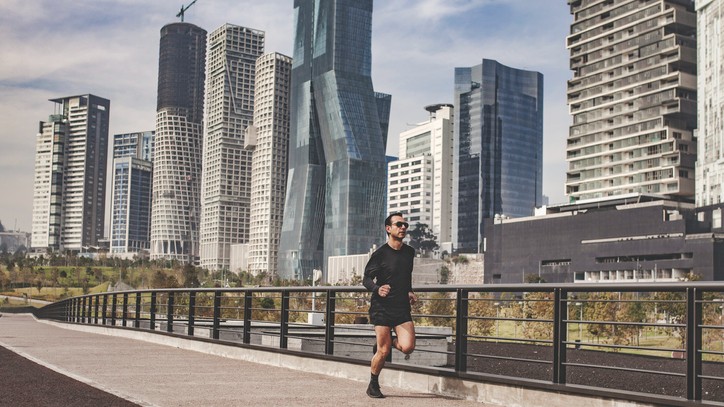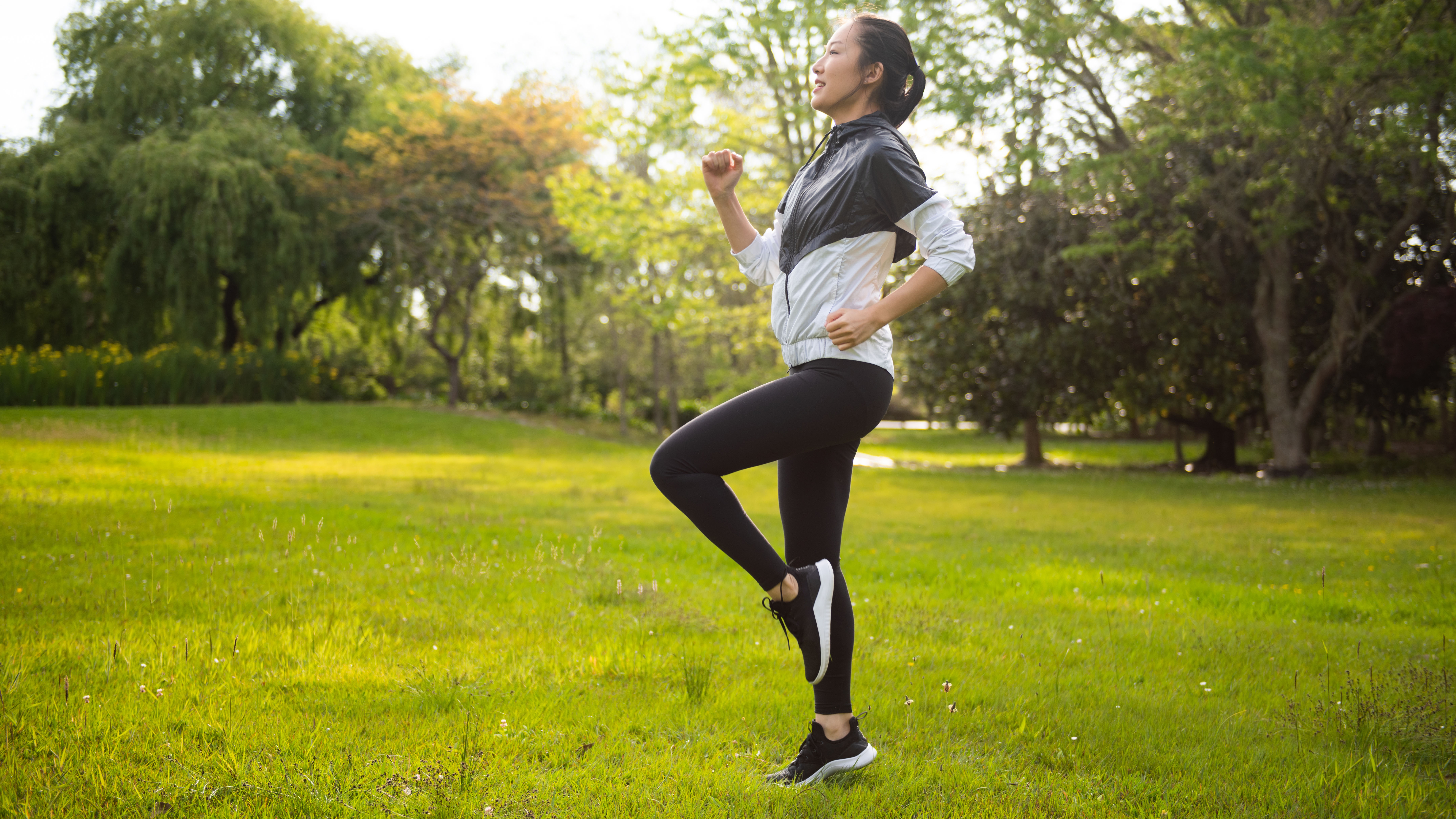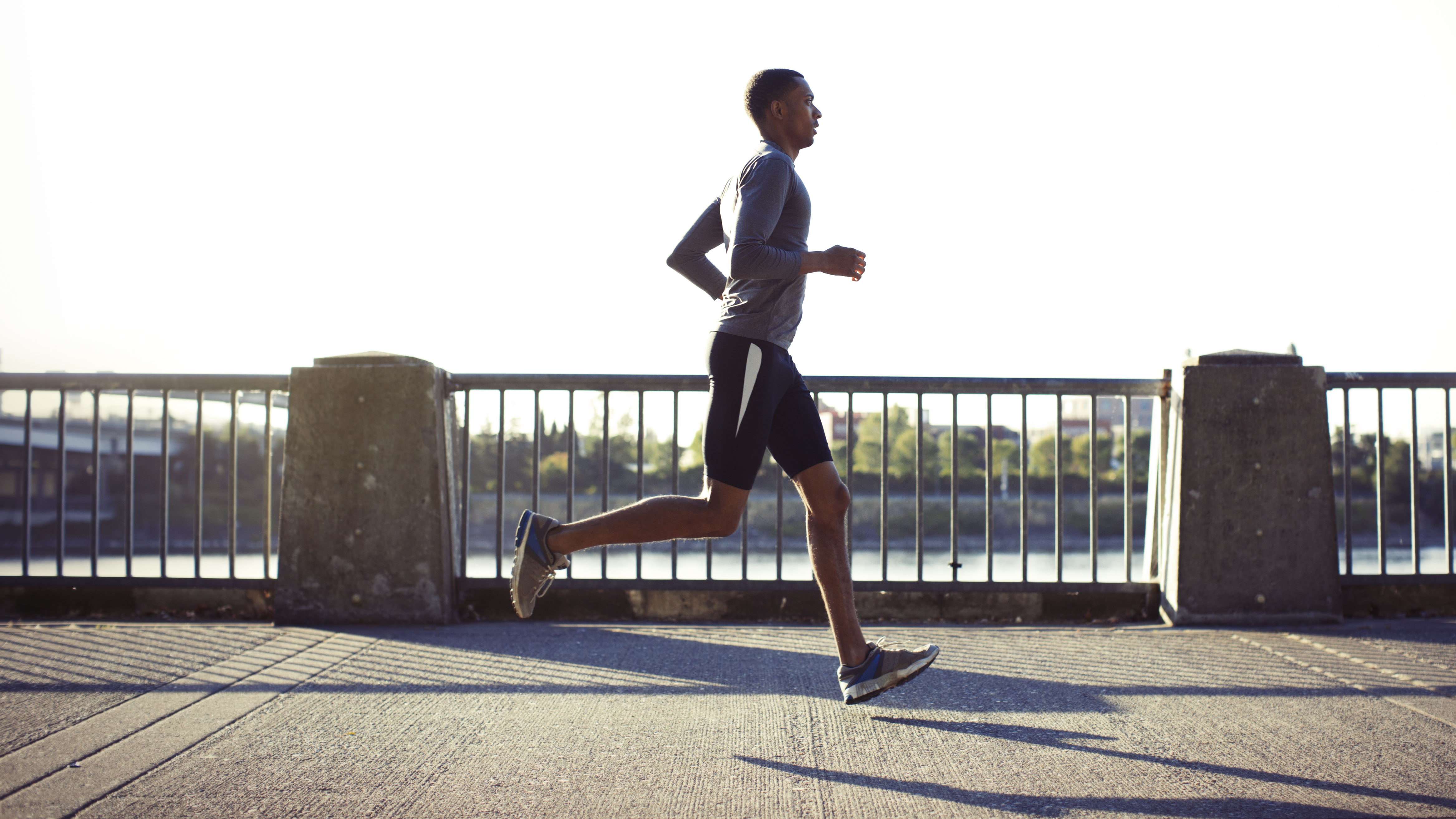Does running make you taller?
The way we move is closely linked to posture…so does running make you taller?

Does running make you taller? It’s a question you may have considered when first starting to exercise on a regular basis. It’s a myth. But, like all good stories, it does have a grain of truth in it. We know running is beneficial for your core and spine, in addition to weight loss – all of which can contribute to better posture. This is why some regular runners might appear leaner and longer.
If you’re looking to seem taller by getting slimmer and improving your posture, running is a great exercise for it. All you need is comfortable exercise gear to wear and a pair of running shoes – although perusing our best running watch guide and best running shoes on sale is a fine way to track your workouts in more detail. We’ve highlighted some of the science below and consulted industry experts to get the lowdown on running's relationship with height and posture.
- Related: Best running headphones
How does running influence your posture?

Running has been found to be beneficial for improving posture over the course of your lifetime. As we age, we tend to hunch as our bones get weaker and our muscles contract, and running can help delay or prevent this.
It’s a great exercise for your spine, according to research published in the journal PLoS One. Your spine is made up of vertebrae, and in between each one is an intervertebral disk that acts as a shock absorber for the spine. Normally, these disks become less effective with age, but the researchers studied adults between 45 and 60 years old, finding less age-related degeneration in those who ran regularly, keeping you upright and mobile for longer.
Running has a reputation for being bad for your joints – there's a persistent myth that running is bad for your knees – but it’s less well-known that running can be as effective, if not more so, than resistance training when it comes to improving bone density and staving off osteoporosis, according to a University of Missouri study. This in turn will stop your posture degenerating as you age, maintaining optimum muscle and bone health.
What if you want to improve your posture with running right now, not in 10 or 20 years? If you’ve just begun running, it’s worth making a conscious effort to learn how to run properly and how running shoes should fit.This will make you faster and more effective on the roads, and have a beneficial effect on your everyday life.

“The muscular adaptations that stem from running could be beneficial for everyday posture,” says Melissa Thompson, an associate professor of health sciences at Fort Lewis College. “Although, running with a bad posture could also reinforce poor posture in everyday life.
Get the world’s most fascinating discoveries delivered straight to your inbox.
”Posture has been shown to have implications in terms of running energetics, with research indicating that poor posture can increase energetic cost. Additionally, posture influences joint loading when running, so there may be an increased risk of injury in runners who exhibit poor posture,” says Thompson.
UK Athletics running coach Lily Canter says: “Frequent running will only affect a person's posture in everyday life if they are making a conscious effort to correct their posture while running. If you have a better posture when running you are more likely to carry this over into everyday life as it will start to feel more natural.”
How to improve your posture

There are plenty of ways to improve your posture, both in your best running shoes and out of them. Correcting your running form is, pardon the pun, a good first step.
“I see a lot of runners with bad posture and it is the first thing I try to correct,” says Canter. “If you run with slumped shoulders and a curved back you are essentially wasting energy. It is more efficient to have high hips and a straight back so you can propel yourself forward rather than towards the ground.
“Imagine you have a helium balloon tied to the top of your head and it is pulling you upwards. This will help you to maintain a good posture whether you are running, walking or sitting.”
The second factor, says Canter, is to have a strong core, as exercises to strengthen your core may also help your posture over time. Strengthening the muscle groups in the abdominal and lumbar regions of the body (essentially, the muscles surrounding the base of your spine) will help you improve posture and performance at any age.
You might immediately think of doing sit-ups or crunches, but these exercises can place a lot of pressure on your spine as you’re pressing it into the floor during the movement. A safer alternative is holding the plank position, which allows you to strengthen your lower back and abdominal muscles without placing any dangerous pressure on your spine. Check out our guide on how to strengthen your core for more information.
While this isn’t strictly running, it’s closely related: performing core-strengthening exercises will improve your running efficiency and economy, allowing you to expend less energy and run more safely, according to research in the journal PLoS One. Your core strength improves your posture and makes you better at running simultaneously; in turn, running more frequently will strengthen your bones and continue to help your posture as you age.
Further reading
Long-term running in middle-aged men and intervertebral disc health, a cross-sectional pilot study
Building Strong Bones: Running May Provide More Benefits Than Resistance Training, Study Finds
Effects of 8-week core training on core endurance and running economy
Matt Evans is the current fitness editor over at our sister site, TechRadar. Armed with a Master’s Degree in journalism from Cardiff University, Matt started his digital journalism career at Men’s Health and stayed on for over two years, where he earned his stripes in health and fitness reporting. Since then, his byline has appeared in a wide variety of publications and sites including Runner’s World, Women’s Health, Men’s Fitness, and LiveScience on everything from exercise, to nutrition, to mental health, alongside covering extreme sports for Red Bull.
Stretching is Matt’s top fitness tip. He originally discovered exercise through martial arts, holding a black belt in Karate, and trained for many years in kickboxing. During COVID he also fell in love with yoga, as it combined martial-arts style stretching with a bit of personal space.
When he’s not training or writing about health and fitness, he can be found reading doorstop-thick fantasy books with lots of fictional maps in them.



